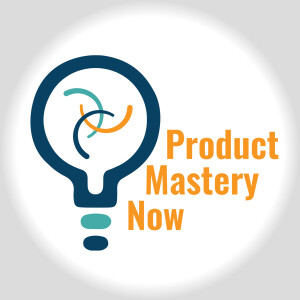
Product Mastery Now for Product Managers, Leaders, and Innovators
Business:Management

454: How product leaders can best increase team performance – with Tami Reiss
 2023-09-11
2023-09-11
Tami Reiss is with us. She is an experienced product executive who works with tech product leaders and teams to realize their potential by focusing on their strengths to advance toward their goals. She guides product leaders through defining their personal product vision then taking the right steps to make it a reality. Right now, Tami is focusing on coaching product leaders, speaking around the world about management and strategy, and interestingly, writing a children’s book called What do Product Managers Do? She will be sharing with us how product leaders increase team performance.
Summary of some concepts discussed for product managers [12:09] How can product leaders improve product team performance?Connection—help people feel connected to each other and the larger mission and vision of the company. People need to see themselves not as cogs in a wheel but as pieces of the puzzle. Each person owns their piece, but it is just one piece, so they have to help out the other pieces. I often see siloed teams, where the team members may have never met in-person. Inter-team connection is important.
It is important to talk to your customers, but it is also important to talk to prospective customers. Generally, the only way to talk to them is through salespeople, so you must have a strong connection with your salespeople. Product leaders should encourage their product managers to establish relationships with internal stakeholders that will assist them in getting a better pulse on the market.
[18:23] How can product managers build those relationships?Reach out to the customer success manager or implementation manager. Tell them you’re looking to learn more about how your product gets implemented and ask if there is somebody you can form a partnership with. You’re not looking to do research; you’re looking to create an ongoing partnership with somebody that will allows you to understand the impacts of your choices on their team. When you meet that person, get to know them. This is not a transactional moment. Form relationships with many people to access different kinds of customers. Establish empathy for who they are, what their aspirations are, and how you can help them with that. Treat them like a human and learn about their personal life to create a relationship that isn’t only transactional.
[24:23] How does empowerment relate to helping product teams be more effective?Part of empowerment is not being overly prescriptive. When you’re doing strategy deployment, you’re not supposed to tell someone what to do; you’re supposed to give them goals and guidelines that help them feel empowered within those guidelines to spread their wings and make choices. The other part is teaching someone how to advocate for their ideas—how to navigate interpersonal relationships, have empathy for people, and spin what you’re talking about so people get on board with you. Influence without authority is the most crucial skill we have, and that is a matter of advocating for your idea in way that is respectful and brings other people on.
Someone recently asked me what the difference is between leadership and management, and I said management is the day-to-day, one-on-ones, signing off on PTO, etc. Leadership is what you are doing that makes people follow you. Product management is always about leadership.
We teach people to be better leaders using “I do, we do, you do.” First, you invest time showing someone how you would do it. Then you do it together. Then they do it on their own while you watch. By the end of those three rounds, the person you’re training feels a lot more confident because they know why certain things are done and how you make decisions. By the end, they become a functional leader who knows how to influence without authority. They can move ideas forward without your support. This is the best empowerment you can give them.
At the end of this, the product manager, rather than coming to you asking what to do, will come to you as a manager, having analyzed the problem and created a plan. They will trust you as a mentor to tell them where their plan might need adjustments. That’s what you want in an employee.
Action Guide: Put the information Tami shared into action now. Click here to download the Action Guide. Useful links:- Connect with Tami on LinkedIn
- Visit Tami’s website
“Ideas are a dime a dozen. People who implement them are priceless.” – Mary Kay Ash
Thanks!Thank you for taking the journey to product mastery and learning with me from the successes and failures of product innovators, managers, and developers. If you enjoyed the discussion, help out a fellow product manager by sharing it using the social media buttons you see below.
More Episodes
Create your
podcast in
minutes
- Full-featured podcast site
- Unlimited storage and bandwidth
- Comprehensive podcast stats
- Distribute to Apple Podcasts, Spotify, and more
- Make money with your podcast
It is Free
- Privacy Policy
- Cookie Policy
- Terms of Use
- Consent Preferences
- Copyright © 2015-2024 Podbean.com





